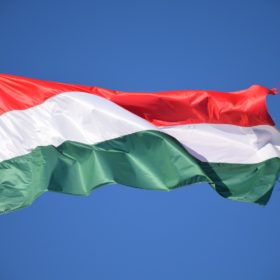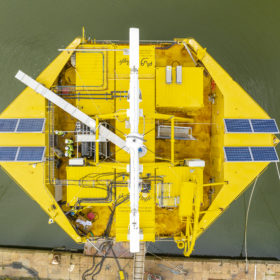Solitek unveils 435 W rooftop photovoltaic modules
Lithuania-based Solitek announced two new 435 W modules for integrated PV roofs featuring 22.04%-efficient cell technology. The Solitek’s Solid Solrif in-roof product line is paired with mounting systems supplied by Swiss-based Ernst Schweizer AG.
Serbia announces 1 GW solar, 400 MWh battery storage sites
Six large-scale solar plants colocated with battery energy storage systems should be delivered by mid 2028.
Platio debuts new walkable solar panels
The Hungarian company said its new products can handle a load of 300 kg. The modules are available with power outputs of 23.65 W and 59.68 W and can be integrated with wood-plastic composite, wood, stone, or ceramic floorings.
EU approves €1.2 billion renewables grant scheme in Poland
The European Commission has given the green light to a €1.2 billion ($1.3 billion) state aid program in Poland that provides direct grants to companies producing solar panels, batteries, heat pumps, and other renewable equipment components.
Hungary’s residential PV subsidy scheme draws 20,000 applicants
The Hungarian government says 20,000 households have signed up for its PV subsidies scheme, which offers up to HUF 5 million ($14,125) per home installation. The original HUF 75.8 billion budget was increased by HUF 30 billion in July.
Port of Riga to host 100 MW solar plant
Lithuania’s SNG Solar is set to build a 100 MW solar plant in the port of Riga, Latvia. Upon completion, the facility will be one of the largest solar projects in the Baltics.
Romania launches 1.5 GW renewables auction
The Romanian authorities plan to allocate 1 GW of wind capacity and 500 MW of solar through the country’s first procurement exercise. The Romanian Ministry of Energy has set a maximum strike price of €91 ($100.7)/MWh for solar projects and €93/MWh for wind projects.
The Hydrogen Stream: H2Mare project links electrolyzers to wind turbine
The German government says that the H2Mare OffgridWind project in Denmark has connected two electrolyzers to a wind turbine for hydrogen production, while Ontras Gastransport and H2 Energy Europe have agreed to define the technical and commercial framework for hydrogen transportation in its Green Octopus Mitteldeutschland pipeline project.
Poland relaunches residential solar, storage rebate scheme
The sixth edition of the Polish government’s residential solar and storage rebate scheme is now open, with a total budget of PLN 400 million ($103.2 million). Applications will be accepted until Dec. 20, or until funds are exhausted.
Assessing floating PV costs across Europe
Researchers have analyzed the viability of floating PV in terms of net present value, internal rate of return, and LCOE. They included 25 European countries in their work, including Germany, the United Kingdom, Spain, and Italy.










